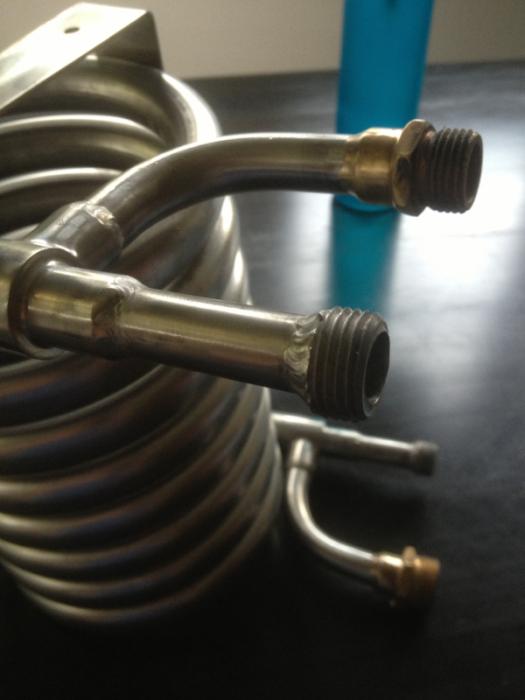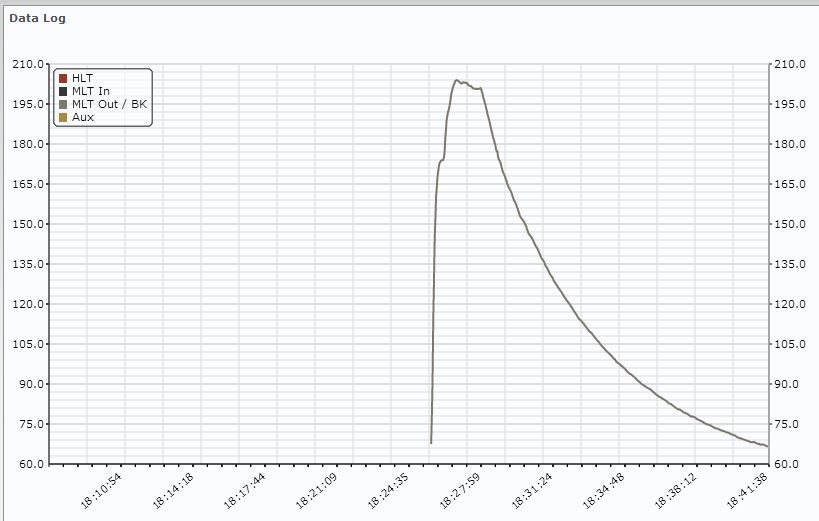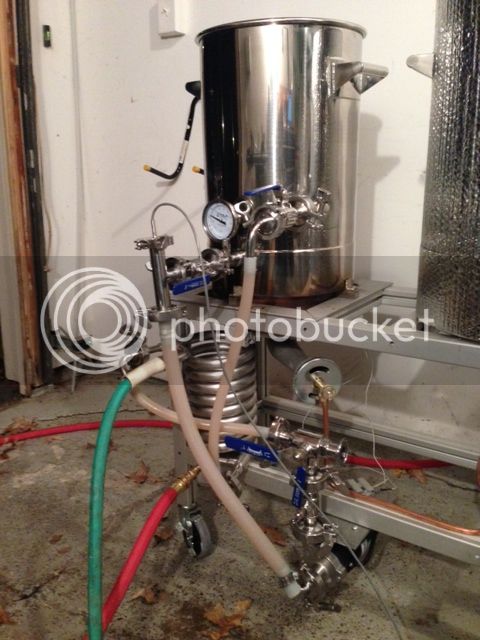Faster coolant flow (and more of it) will cool the wort down quicker, all else being equal, but there's a point of diminishing returns where you become very inefficient with your coolant. If you're using twice as much cooling water for a 10% reduction in cooling time, it might not be worth it.
Regarding the math: The difference in the
diameter is 0.25", but there's a big difference in
area in that quarter-inch outer ring vs. a quarter-inch diameter. The area of a circle is pi times the square of its radius, with the radius being half the diameter: A = pi * r^2. (Or you can substitute A = pi * (d/2)^2 if you want. (If you want to get the volume of the tube/pipe/cylinder, just multiple by the height, or think of it as the length, if you prefer.)
For a 1/4" circle, the area is 0.049 sq. in.
For a 5/8" circle, the area is 0.307 sq. in.
For a 7/8" circle, the area is 0.601 sq. in.
(Again, multiply those figures by the length of the pipe--
in inches--to get the total cubic inches that the pipe holds.)
You can see that the 7/8" pipe approaches twice the cross-section of the 5/8" pipe, probably more like 80-90% without actually doing that part of the math, but it's getting there.
But a larger diameter outer pipe wouldn't necessarily be better. It would allow faster flow rates (all else being equal), but there's an effect with fluids (i.e., liquids and gases, although we're only concerned about liquids here) called
laminar flow. It's this effect that causes water near the inner pipe to stay close to the inner tube, and it also causes the wort near the edge of the inner pipe to stay close to the inner pipe, with less mixing than you might expect.
This is why you see "
convoluted counter-flow
chillers" (or even the occasional
immersion chiller for sale; the surface of the inner pipe is not smooth, so it disrupts the laminar flow and causes greater mixing of the different layers within both the wort and the coolant.
(If it's possible to force a high-enough flow rate, I would
guess that
smaller pipes might be more efficient with the coolant, possibly at the expense of longer cooling times, but I don't know for sure. In any case, nearly every design decision is a trade-off.)
As you can see, both fluid dynamics and thermodynamics play large parts in what look at first like simple wort chillers.






